-
 Bitcoin
Bitcoin $106,731.2224
-1.05% -
 Ethereum
Ethereum $2,444.9804
-1.20% -
 Tether USDt
Tether USDt $1.0003
0.01% -
 XRP
XRP $2.1882
0.09% -
 BNB
BNB $651.1435
-0.61% -
 Solana
Solana $148.3252
-2.09% -
 USDC
USDC $1.0000
0.01% -
 TRON
TRON $0.2787
0.55% -
 Dogecoin
Dogecoin $0.1598
-3.16% -
 Cardano
Cardano $0.5520
-2.43% -
 Hyperliquid
Hyperliquid $39.0960
-2.64% -
 Bitcoin Cash
Bitcoin Cash $516.9519
2.98% -
 Sui
Sui $2.7011
-2.95% -
 Chainlink
Chainlink $13.0582
-1.71% -
 UNUS SED LEO
UNUS SED LEO $8.9250
-2.53% -
 Stellar
Stellar $0.2359
-0.18% -
 Avalanche
Avalanche $17.3856
-3.73% -
 Toncoin
Toncoin $2.8095
-3.56% -
 Shiba Inu
Shiba Inu $0.0...01121
-1.95% -
 Litecoin
Litecoin $85.2795
-0.85% -
 Hedera
Hedera $0.1471
-2.15% -
 Monero
Monero $319.8004
1.12% -
 Dai
Dai $1.0001
0.01% -
 Ethena USDe
Ethena USDe $1.0001
0.02% -
 Bitget Token
Bitget Token $4.5344
-1.07% -
 Polkadot
Polkadot $3.3224
-2.96% -
 Uniswap
Uniswap $6.9697
-2.75% -
 Aave
Aave $266.1658
-2.25% -
 Pepe
Pepe $0.0...09414
-3.41% -
 Pi
Pi $0.4913
-3.29%
What is the difference between the mark price and the latest price of Bybit contracts? Which one should be used when trading?
The mark price on Bybit helps prevent unnecessary liquidations by reflecting true market value, while the latest price is key for real-time trading decisions.
May 03, 2025 at 11:22 pm
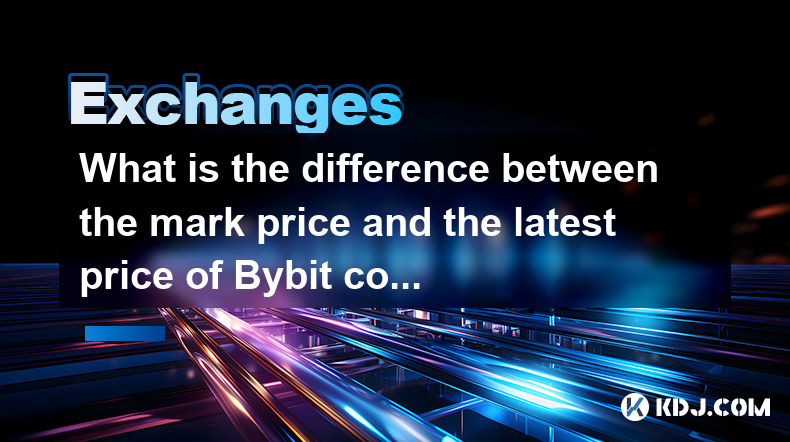
Understanding the difference between the mark price and the latest price of Bybit contracts is crucial for any trader looking to navigate the cryptocurrency derivatives market effectively. Both prices serve distinct purposes and are used in different contexts within trading. In this article, we will explore these differences in detail and discuss which price traders should focus on when making trading decisions.
What is the Mark Price?
The mark price is a critical component in Bybit's risk management system designed to prevent unnecessary liquidations. It is a calculated price that aims to reflect the true market value of a contract more accurately than the latest price. Bybit calculates the mark price using a combination of the latest price and the fair price, which is derived from the spot price and the funding rate. The formula for the mark price is as follows:
[ \text{Mark Price} = \text{Index Price} \times (1 + \text{Funding Rate} \times \text{Time to Funding}) ]
The index price is typically an average of prices from multiple spot exchanges, which helps to smooth out any anomalies or manipulation in the market. The funding rate is a mechanism to ensure that the perpetual contract's price stays aligned with the spot price, and the time to funding refers to the time remaining until the next funding settlement.
What is the Latest Price?
The latest price, on the other hand, is the most recent trading price of the Bybit contract. It reflects the current market sentiment and is influenced by the immediate supply and demand dynamics on the exchange. This price is what traders see in real-time on the trading platform and is used for executing trades.
Why is the Mark Price Used?
The mark price is primarily used for calculating the unrealized profit and loss (PnL) of open positions and for determining whether a position should be liquidated. By using the mark price, Bybit ensures that liquidations are based on a more stable and fair value, reducing the risk of cascading liquidations caused by temporary market volatility or manipulation.
Why is the Latest Price Used?
The latest price is essential for traders who need to make quick decisions based on the current market conditions. It is the price at which traders can enter or exit positions immediately. However, relying solely on the latest price for decision-making can be risky, as it may not always reflect the true market value and can be subject to sudden spikes or drops.
Which Price Should Be Used When Trading?
When it comes to trading, understanding the context in which each price is used is crucial. Here are some guidelines on when to use each price:
For Making Trading Decisions: Traders should primarily use the latest price to monitor market trends and make entry or exit decisions. It provides real-time information that is essential for reacting to market movements quickly.
For Risk Management: The mark price is the key metric to monitor for managing risk. It helps traders understand their true unrealized PnL and assess the risk of liquidation. By focusing on the mark price, traders can make more informed decisions about position sizing and stop-loss levels.
For Long-Term Position Monitoring: For those holding positions over longer periods, the mark price is more relevant. It provides a more stable reference point for evaluating the performance of a position and planning future trades.
For Understanding Market Health: The mark price can also give traders insights into the overall health of the market. A significant deviation between the mark price and the latest price may indicate market stress or potential manipulation.
Practical Application in Trading
To illustrate the practical application of these prices, let's consider a scenario where a trader is monitoring a Bybit BTCUSD perpetual contract:
Monitoring the Latest Price: The trader observes that the latest price of the BTCUSD contract is $30,000. They decide to enter a long position at this price, expecting the market to rise.
Checking the Mark Price: Before entering the trade, the trader checks the mark price, which is $29,950. This indicates that the market's true value might be slightly lower than the latest price, suggesting a potential risk of a price correction.
Setting Stop-Loss: Based on the mark price, the trader sets a stop-loss order at $29,500 to manage risk effectively. This stop-loss is based on the mark price to avoid unnecessary liquidations.
Monitoring Unrealized PnL: As the trader holds the position, they monitor the unrealized PnL based on the mark price. If the mark price moves to $30,500, the trader's unrealized profit increases, even if the latest price shows more volatility.
Exiting the Position: When the trader decides to exit the position, they do so at the latest price, which might be $30,600 at that moment. The realized profit is then calculated based on the entry and exit prices.
Frequently Asked Questions
Q: Can the mark price and the latest price ever be the same?
A: Yes, the mark price and the latest price can be the same under certain market conditions, particularly when the market is stable and there is no significant deviation between the spot price and the perpetual contract price. However, due to the inclusion of the funding rate in the mark price calculation, they are often slightly different.
Q: How often is the mark price updated?
A: The mark price is updated in real-time, similar to the latest price. Bybit's system continuously calculates the mark price to ensure it reflects the most current market conditions.
Q: Does the mark price affect the funding rate?
A: The mark price itself does not directly affect the funding rate. However, the funding rate is a component in the calculation of the mark price. The funding rate is determined by the difference between the perpetual contract price and the spot price, and it is used to align the two prices over time.
Q: Can I trade based solely on the mark price?
A: While the mark price is crucial for risk management and understanding the true market value, trading decisions should not be based solely on the mark price. The latest price is necessary for executing trades and reacting to immediate market movements. A balanced approach that considers both prices is recommended for effective trading.
Disclaimer:info@kdj.com
The information provided is not trading advice. kdj.com does not assume any responsibility for any investments made based on the information provided in this article. Cryptocurrencies are highly volatile and it is highly recommended that you invest with caution after thorough research!
If you believe that the content used on this website infringes your copyright, please contact us immediately (info@kdj.com) and we will delete it promptly.
- Powell, Stablecoin Regulation, and Circle's Bold Move: A New York Minute on Crypto's Future
- 2025-07-02 02:30:12
- Ethereum Price, Tom Lee, and Bitcoin: A New Era for Crypto?
- 2025-07-02 02:30:12
- Hoskinson, Ripple, Cardano DeFi: A New Era of Collaboration?
- 2025-07-02 02:35:12
- BlockDAG, ALGO, and the Crypto Trends Shaping 2025
- 2025-07-02 01:50:12
- Cold Wallet, Token, Gains: Is CWT the Smartest Crypto Move?
- 2025-07-02 01:10:12
- Pi Coin's Rocky Ride: Support Levels, Recovery Timeline, and What the Experts Are Saying
- 2025-07-02 01:10:12
Related knowledge
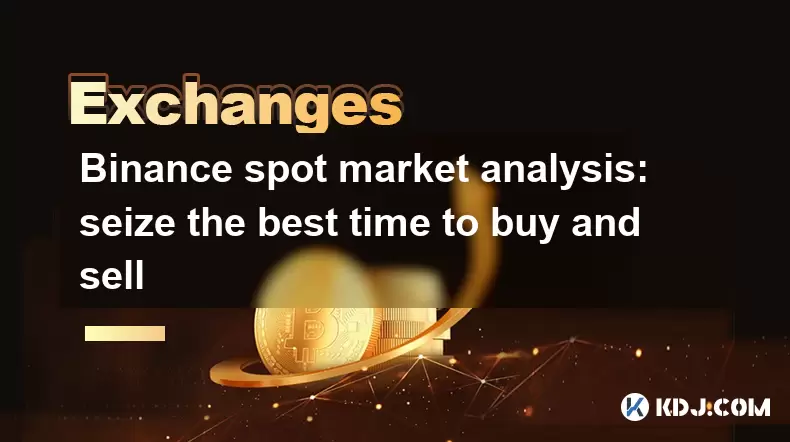
Binance spot market analysis: seize the best time to buy and sell
Jun 19,2025 at 04:56pm
Understanding the Binance Spot MarketThe Binance spot market is one of the most popular platforms for cryptocurrency trading globally. It allows users to trade digital assets at current market prices, making it essential for traders aiming to buy low and sell high. Unlike futures or margin trading, spot trading involves direct ownership of the asset aft...
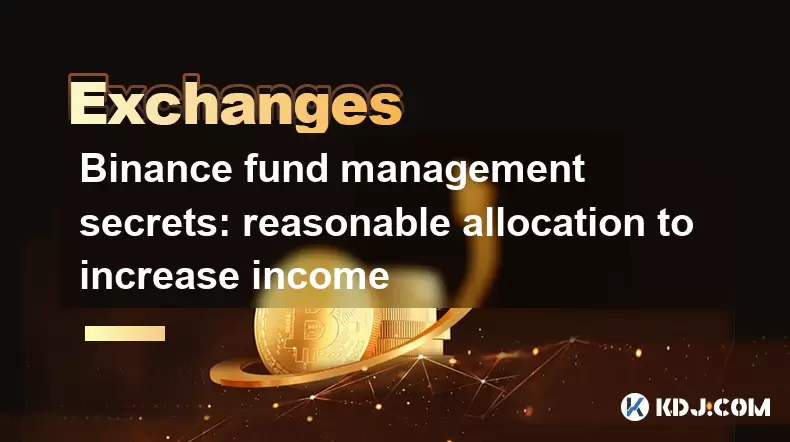
Binance fund management secrets: reasonable allocation to increase income
Jun 22,2025 at 02:29pm
Understanding Binance Fund ManagementBinance fund management involves strategic allocation of your cryptocurrency assets to optimize returns while managing risk. The key to successful fund management lies in understanding how different investment options on the Binance platform can be utilized to create a diversified portfolio. This includes spot tradin...
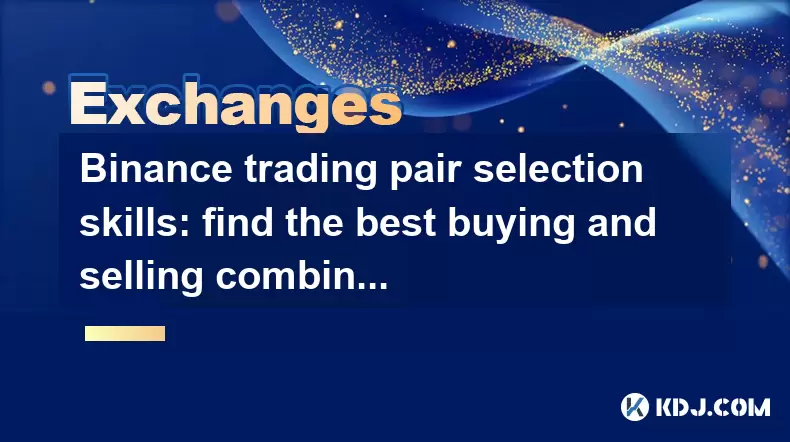
Binance trading pair selection skills: find the best buying and selling combination
Jun 23,2025 at 02:49am
Understanding the Basics of Trading Pairs on BinanceBefore diving into trading pair selection skills, it's essential to understand what a trading pair is. On Binance, a trading pair refers to two cryptocurrencies that can be traded against each other. For example, BTC/USDT means Bitcoin is being traded against Tether. Each trading pair has its own liqui...
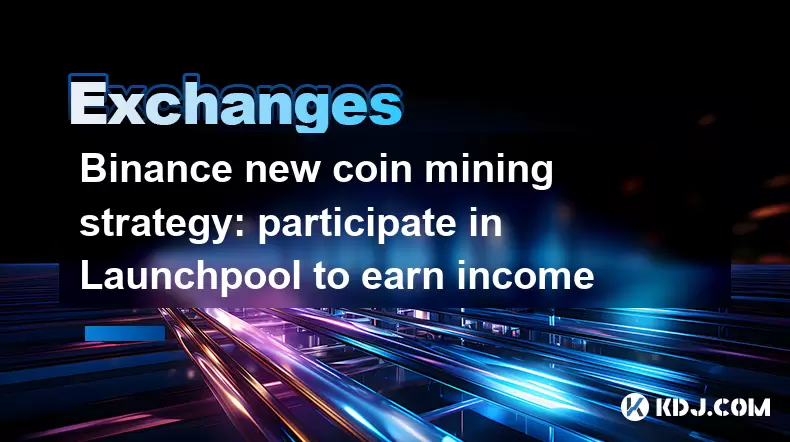
Binance new coin mining strategy: participate in Launchpool to earn income
Jun 23,2025 at 11:56am
What is Binance Launchpool and how does it work?Binance Launchpool is a feature introduced by the world’s largest cryptocurrency exchange, Binance, to allow users to earn new tokens through staking. This platform enables users to stake their existing cryptocurrencies (such as BNB, BUSD, or other supported assets) in exchange for newly launched tokens. T...
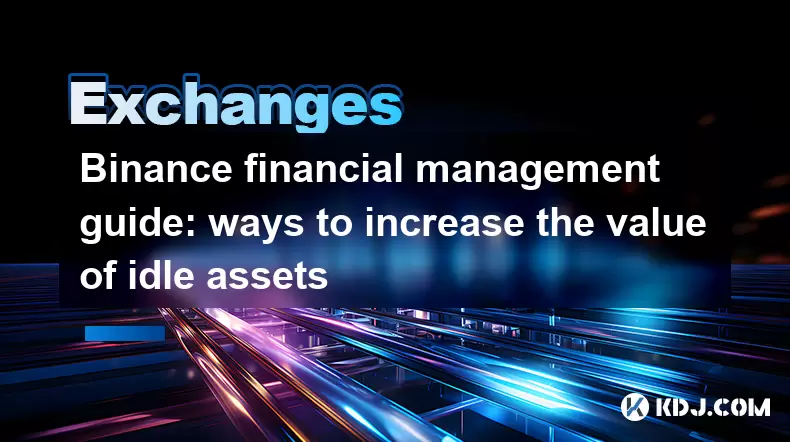
Binance financial management guide: ways to increase the value of idle assets
Jun 19,2025 at 11:22pm
Understanding Idle Assets in the Cryptocurrency SpaceIn the fast-paced world of cryptocurrency, idle assets refer to digital currencies that are not actively being used for trading, staking, or yield farming. Holding these funds in a wallet without utilizing them means missing out on potential growth opportunities. Binance, as one of the leading platfor...
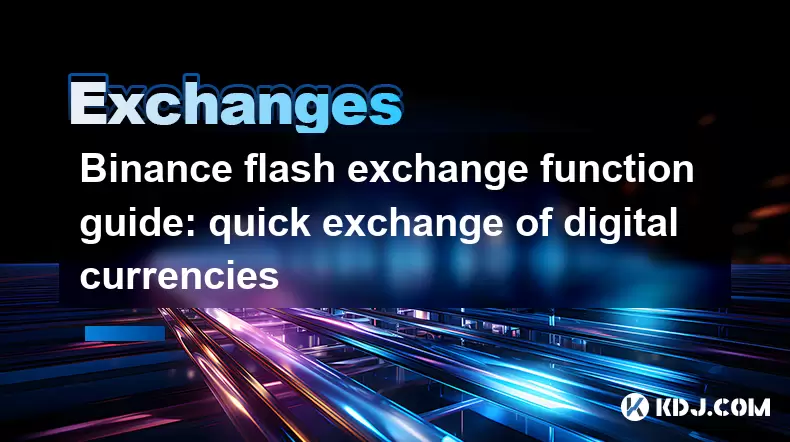
Binance flash exchange function guide: quick exchange of digital currencies
Jun 23,2025 at 12:29pm
What is the Binance Flash Exchange Function?The Binance Flash Exchange function is a powerful tool designed to allow users to instantly swap between supported cryptocurrencies without the need for placing traditional buy/sell orders. This feature simplifies the trading process by offering a direct exchange mechanism, eliminating the requirement to conve...

Binance spot market analysis: seize the best time to buy and sell
Jun 19,2025 at 04:56pm
Understanding the Binance Spot MarketThe Binance spot market is one of the most popular platforms for cryptocurrency trading globally. It allows users to trade digital assets at current market prices, making it essential for traders aiming to buy low and sell high. Unlike futures or margin trading, spot trading involves direct ownership of the asset aft...

Binance fund management secrets: reasonable allocation to increase income
Jun 22,2025 at 02:29pm
Understanding Binance Fund ManagementBinance fund management involves strategic allocation of your cryptocurrency assets to optimize returns while managing risk. The key to successful fund management lies in understanding how different investment options on the Binance platform can be utilized to create a diversified portfolio. This includes spot tradin...

Binance trading pair selection skills: find the best buying and selling combination
Jun 23,2025 at 02:49am
Understanding the Basics of Trading Pairs on BinanceBefore diving into trading pair selection skills, it's essential to understand what a trading pair is. On Binance, a trading pair refers to two cryptocurrencies that can be traded against each other. For example, BTC/USDT means Bitcoin is being traded against Tether. Each trading pair has its own liqui...

Binance new coin mining strategy: participate in Launchpool to earn income
Jun 23,2025 at 11:56am
What is Binance Launchpool and how does it work?Binance Launchpool is a feature introduced by the world’s largest cryptocurrency exchange, Binance, to allow users to earn new tokens through staking. This platform enables users to stake their existing cryptocurrencies (such as BNB, BUSD, or other supported assets) in exchange for newly launched tokens. T...

Binance financial management guide: ways to increase the value of idle assets
Jun 19,2025 at 11:22pm
Understanding Idle Assets in the Cryptocurrency SpaceIn the fast-paced world of cryptocurrency, idle assets refer to digital currencies that are not actively being used for trading, staking, or yield farming. Holding these funds in a wallet without utilizing them means missing out on potential growth opportunities. Binance, as one of the leading platfor...

Binance flash exchange function guide: quick exchange of digital currencies
Jun 23,2025 at 12:29pm
What is the Binance Flash Exchange Function?The Binance Flash Exchange function is a powerful tool designed to allow users to instantly swap between supported cryptocurrencies without the need for placing traditional buy/sell orders. This feature simplifies the trading process by offering a direct exchange mechanism, eliminating the requirement to conve...
See all articles

























































































